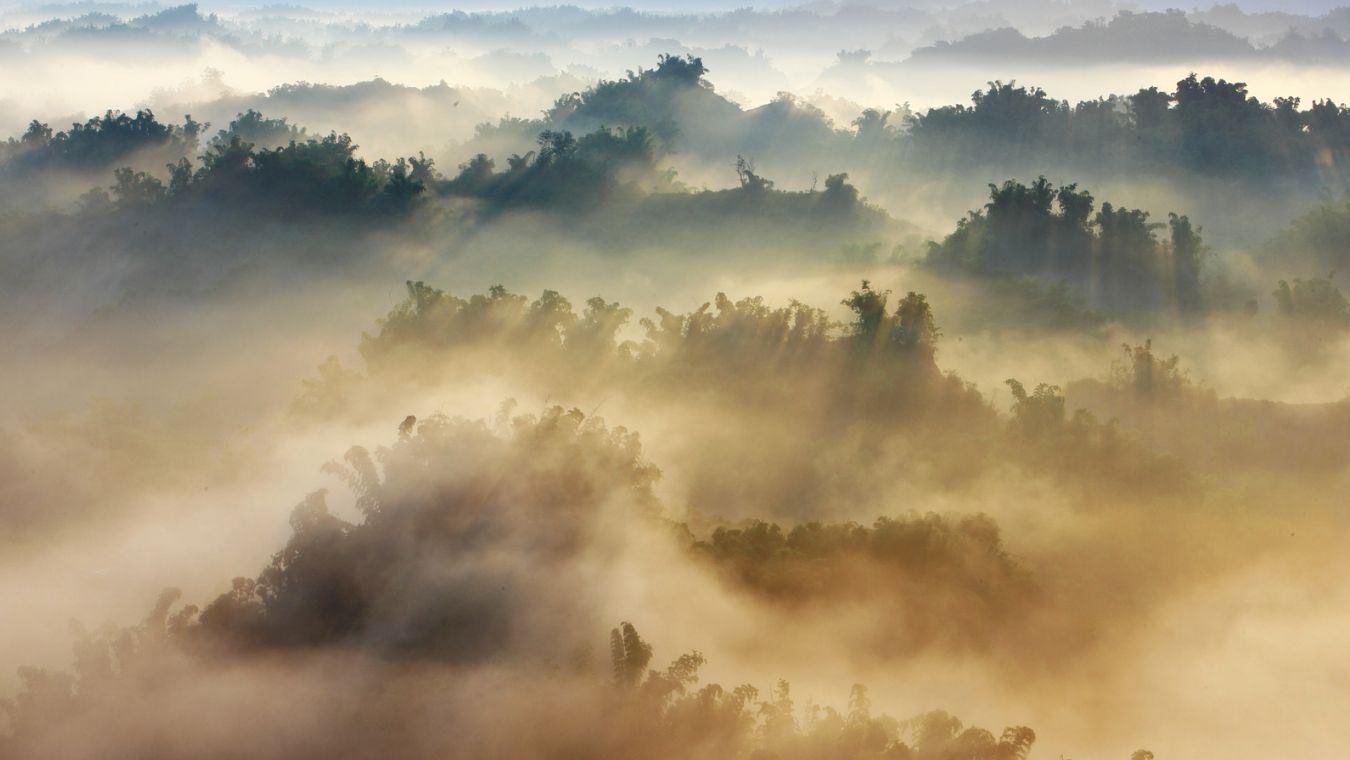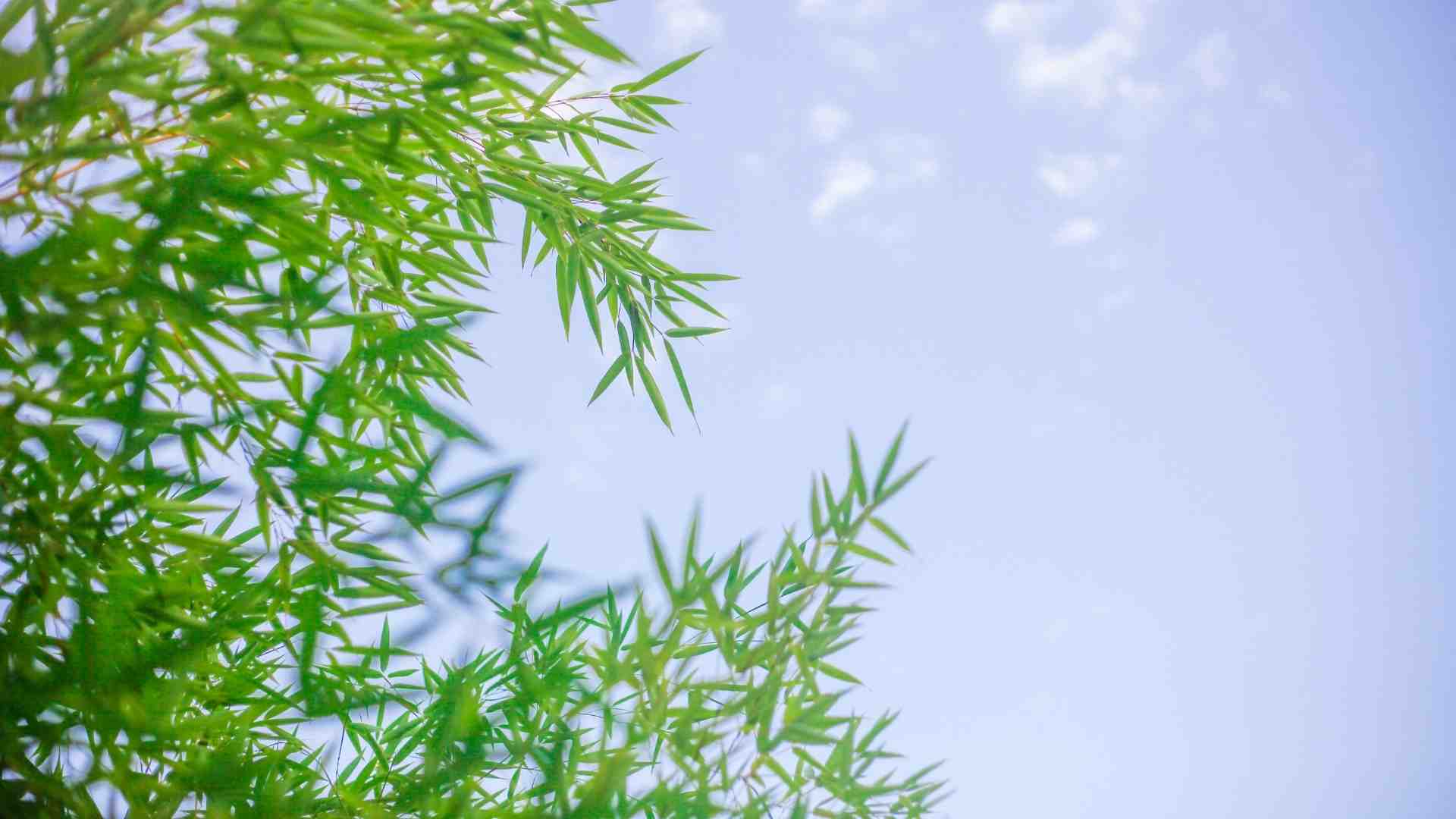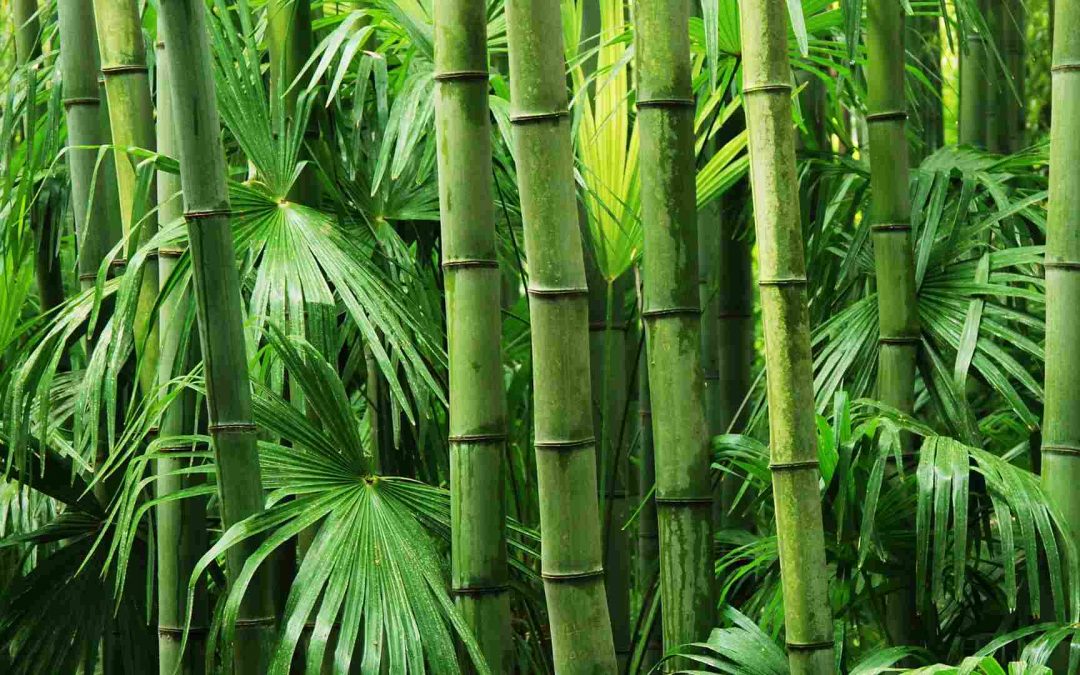It’s a common trope to refer to trees and forests as the lungs of our planet. In the process of photosynthesis, all plants and trees convert carbon dioxide into oxygen, providing a healthier atmosphere for humans and animals. Reforestation is key to reducing CO2 levels and fighting climate change. And in that context, bamboo is equal to or even more valuable than trees. An additional benefit of trees and bamboo is their ability to attract rain and precipitation to dry regions.
Just like trees, planting forests of bamboo can increase rainfall to help mitigate the effects of climate change. Unlike a barren or degraded landscape, a vibrant forest will draw moisture up from the groundwater, transpire water through the leaves, and encourage clouds to stop and linger rather than just drift past. Bamboo is especially effective at restoring these landscapes because of its fast growth rate, tenacious root system, and limited need for soil nutrients.
Trees, bamboo and rainfall
New climate research from ETH Zurich, Institute for Atmospheric and Climate Science, has demonstrated a clear correlation between planting forests and increasing rainfall. According to the 2021 study, summer rains will increase by more than 7% in areas where agricultural land is replaced with forests.
This latest research confirms many years of casual but unscientific observations. We now have data to prove that changes in land use and land coverage have a measurable impact on the local, atmospheric conditions. According to the study by ETH Zurich, the air moves much differently and more slowly over the rough and uneven surface of a forest.

Above the smooth surface of farmland or barren terrain, the weather is far more likely to blow by, unhindered. But where tall trees reach into the sky, they create drag and turbulence, causing clouds to get hung up. The longer the clouds stick around, the greater chances that they will release some precipitation.
As the clouds cling to the trees and bamboo, it’s as if the forest was generating its own microclimate. The vegetation adds still more moisture to this climate by drawing water up from the aquifer toward the earth’s surface. Furthermore, as the roots drink from the soil, the leaves transpire some of this moisture, which can, in turn, be absorbed into the clouds.
At the same time, it’s important to understand that forests are not creating water out of nothing. The roots, stems and leaves of trees, bamboo and other vegetation are only able to redirect water that was already in the ground or in the air. Without the forestry, that groundwater would remain in the aquifer, and the clouds would blow on by and dump their rain over the ocean or the next forest.
Bamboo in arid Africa
The research cited above focused on weather patterns in Europe, especially those areas of Southern Europe where droughts are more severe and the effects of climate change are being felt more acutely. But, of course, the same science will apply to other continents.
This phenomenon is particularly interesting in areas like the Sahel in northern, sub-Saharan Africa. As changing weather patterns lead to longer droughts in this part of the world, the Sahara Desert seems to be encroaching slowly southward. From Senegal to Ethiopia, there has been a concerted response to slow this desert expansion. Native trees and drought-tolerant bamboo species like Oxytenanthera abyssinica have played an important role in this effort.
Local populations and forestry managers have high hopes for thwarting this process of desertification. But the battle is far from over.
Also see my in-depth article on Bamboo in Africa.
Bamboo alleviates climate change
The idea of generating more precipitation in arid regions is extremely attractive. But bamboo can do so much more than that.
An increased level of atmospheric CO2 is one of the most critical features of climate change, and trees are a vital remedy for this. Research indicates that bamboo actually produces more oxygen than trees. Studies of Moso bamboo in China and Guadua in Colombia show that bamboo creates about 35 percent more oxygen than an equal area of trees.

Compared to trees, bamboo also offers an incomparably more renewable resource. It takes trees about 15 to 30 years reach to reach maturity and then be suitable for harvest. At that point, they get chopped down, and you have to wait another 15 to 30 years. Bamboo takes only about 6 to 8 years to reach maturity, and then you can harvest it annually. As a grass, new growth from a well-established grove or clump shoots up every year and reaches its full height in a single growing season of about 60 days.
Any product that can be made from a tree can also be made from bamboo. And by choosing bamboo, the slow-growing forests are protected. That means the habitat is allowed to thrive, and the local micro-climates are preserved, not to mention the global climate.
Bamboo as a pioneer crop
In degraded landscapes where the flora is sparse and precipitation is limited, bamboo has everything necessary to regenerate that terrain. Attracting more rainfall is part of that equation, but that’s only one piece of the puzzle.
Bamboo has minimal needs in terms of nutrients. Where other plants struggle, bamboo’s vigorous roots are able to gain a foothold. As the bamboo gets established and starts to grow, the benefits for the local ecosystem are widespread. The roots do an excellent job of binding soil together to prevent erosion, a common issue in areas that have been overfarmed or deforested.
Over time, the rhizome roots add beneficial humus and the fallen leaves break down, contributing to richer, healthier topsoil. Meanwhile, bamboo is taller and faster growing than most other plants, and so it’s able to cast some shade and make the area more hospitable for other seedlings to get a start on life.
Please visit my articles on Bamboo for land restoration and Bamboo as a pioneer species to learn more.
Bamboo to the rescue
It will take more than bamboo to save us from the current course of climate change. But in terms of restoring lands and forests and offering a more sustainable resource for building materials and consumer products, bamboo is one of the best tools we have. Take a look at these other pages to learn more about this plant’s incredible potential.





















This article appreciates bamboo for its ability to transpire more water. However it would be very interesting to juxtapose this quality with Eucalyptus that is disparaged due to the same characteristics